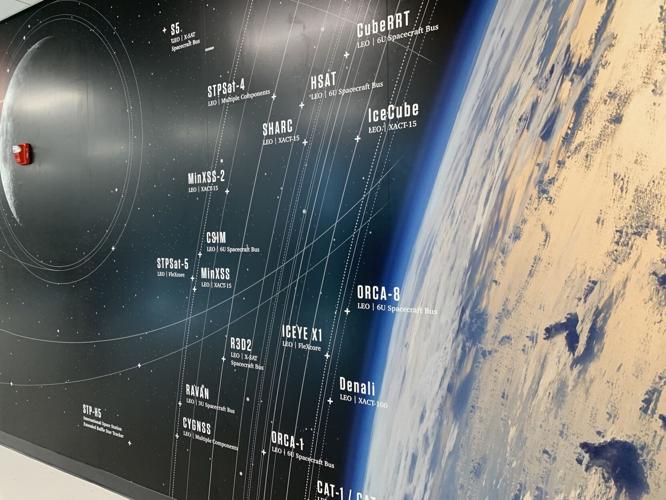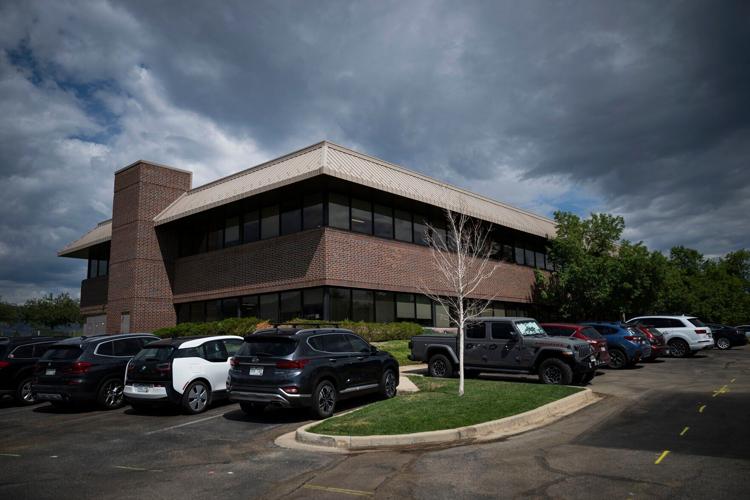Blue Canyon Technologies’ new satellite might have a role in Golden Dome and other space applications
A small satellite company is going (just a little) big.
Blue Canyon Technologies, a Lafayette-based small satellite manufacturer, unveiled its Saturn-400 last week. The craft can fill a variety of roles and may be part of the ongoing Golden Dome effort, a new missile defense shield planned for the nation.
Golden Dome, which lacks an officially adopted plan, will need satellites to track hypersonic missiles and potentially intercept them. Though not a product of a military contract, the Saturn-400 brings to the table some features the military may like, such as rapid reorienting enabled by its control moment gyroscope. Plus, with an increased payload capacity, triple previous offerings from Blue Canyon Technologies, the new spacecraft can fulfill a variety of needs, the company said.
“(Control moment gyroscopes) provide a quantum leap in the speed with which a spacecraft can reorient and point in another direction, multiplying the return on investment for any mission limited by the responsiveness of its bus platform, especially Earth observation,” said Elvis Silva, Blue Canyon Technologies’ executive director of business development and strategy. “This advanced spacecraft agility, coupled with very low jitter that maximizes the quality of mission data, allows CMGs to offer the performance needed to maximize payload-pointing operations while on-orbit.”
Aerospace and defense firm expanding operations in Colorado Springs, to add 500 jobs
Blue Canyon Technologies has launched 83 small satellites and more than 2,700 components in support of successful missions in “dynamic environments and in multiple orbital classifications, including interplanetary journeys,” a release said. It employs roughly 400 people in Colorado. IT has more than 160 spacecraft orders, according to the news release.
Colorado Springs is the home of Space Command, Space Operations Command, North American Aerospace Defense Command (NORAD) and other missile defense-focused military assets. Military contractors like Lockheed Martin, Northrop Grumman, Kratos and other companies focused on communications, space systems and missile defense also operate in the city. This network may be critical for Golden Dome as it won’t be a singular, monolithic piece of technology, but rather a collection of existing assets — of which Saturn-400 could be a part, even if it was not outright designed to be a piece of Golden Dome.
National Reconnaissance Office taps Colorado company for highly detailed space-based imaging
“The technology we need to deliver Golden Dome exists today it has just never been brought to bear on this problem set to defend the homeland,” Gen. Michael Guetlein said at the recent Innovate Space, hosted by the Space Foundation, a local space focused nonprofit.
Golden Dome is expected to supercharge the local economy, according to Rep. Jeff Crank, R-Colorado Springs, though his office did not provide specific details. The Colorado Springs Chamber of Commerce and Economic Development Corp. estimates that the aerospace and defense industry accounts for more than 40% of the local economy, and statewide, the aerospace economy is the second largest in the nation, behind only California, according to multiple reports.
For now, since a framework plan for Golden Dome is still in the works and only $25 billion — of a roughly $175 billion program — has been approved, the Saturn-400 is available for a variety of missions, the company said.
Roughly the size of a small hot tub, the satellite bus is far smaller than something like the Hubble Space Telescope — a school bus — but larger than Starlink. A satellite bus is the frame or skeleton that customer payloads are attached to. A small satellite weighs up to about 500 kilograms, according to NASA, and the newest offering from Blue Canyon Technologies tips the scale at 300 kg. before a payload is added.
It is small enough that it can be launched by a rideshare rocket, essentially an Uber or Lyft for satellites.
New craft brewery in the works for northeast Colorado Springs
“Rather than a customer having to purchase a single, dedicated launch, rideshares accommodate many different satellites at once, allowing for costs to be distributed across multiple users,” Silva said. “With the development of new satellite designs, rideshare compatibility helps ensure a cost-effective way for our diverse customer set to launch their missions.”
This means customers, which could include nations with a small space program, startups and schools, will have a much easier and cheaper way to launch space missions, opening the doors to a large-scale democratization of space, according to the RAND Corporation, a global policy think tank.
The Saturn-400 is a small piece of infrastructure that can support small space ecosystems while also being part of a bigger project or constellation.
The spacecraft, by virtue of being slightly larger, means it can take larger payloads to space. Where previous small satellites built by Blue Canyon Technologies were limited to something like a 65 cm. telescope for an optical payload mission, the Saturn-400 can handle a 100 cm. version, said Silva.
Military reporter Mary Shinn Contributed to this report.
Colorado Springs Airport traffic is up after slow start to the year






